Low-impact retrofitting & refurbishment - introduction
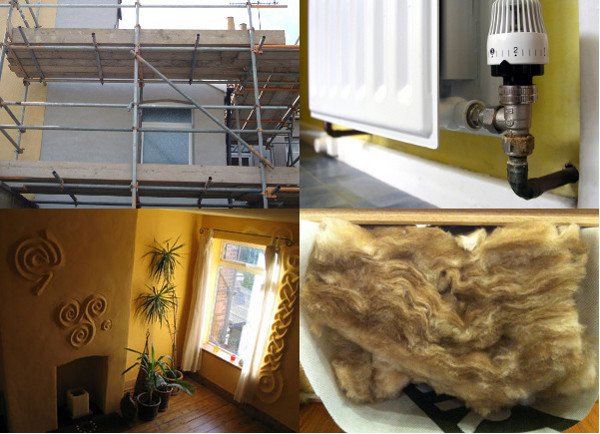
“Tearing down an old house and building a new one is the most wasteful thing we do as humans.” – Grace Potter
Contents
What is low-impact retrofitting / refurbishment?
Retrofitting is about existing buildings. Not everyone has the opportunity to build a natural home from scratch, but we can all take measures to upgrade an existing property – to improve comfort and performance, and reduce energy use and costs, which is what low-impact retrofitting is all about. Only 1% of housing stock is replaced each year. Most is old and very energy inefficient.
What we’re not talking about here is a cosmetic / decor / style retrofit, for example replacing a bathroom or kitchen for the sake of it, or because the colour is wrong – i.e. things that actually increase energy use and costs.

A full retrofit involves a series of measures, from roof to ground, inside and out, to tackle all issues around comfort and energy use. Key to a successful retrofit is considering the property as a whole and deciding on all the appropriate measures for that particular building (all buildings are unique). And of course the measures you choose will fall within your personal constraints of time, potential disruption, budget and ultimate aims.
There’s a logical order to retrofitting, and although you don’t have to stick to it rigidly, it makes sense to sort out repairs and insulation before you start thinking about installing solar panels, for example. This is our suggested order:
- Design
- Repairs
- Breathability & damp
- Ventilation
- Airtightness
- Insulation – including loft, walls, floors and hot water cylinders
- Heating
- Lighting and appliances
- Energy generation

Most people don’t really understand the fabric of their buildings, and so we tend to put all the responsibility for a retrofit project onto the builder who gives the quote. It’s in your interest to have some knowledge beforehand, or you could end up spending more money than necessary and/or making the wrong decisions. Lack of understanding leaves you open to unwittingly using materials that can be damaging, and require more work (and money) to put right later.
History
In post-war Britain, there was an explosion in products from the petrochemical industry. Pre-war, homes tended to be draughty and damp, and plastics were seen as the solution – wonder products that were light, hard-wearing and waterproof. Petrochemical-based products such as vinyl paints and wallpapers, synthetic sealants and plastic sheeting were used to waterproof our homes, creating unhealthy internal environments due to condensation and mould. The synthetic measures didn’t increase the comfort of the property, and created as many problems as they solved. Trapped moisture in houses is unhealthy for people, and moisture trapped in the fabric of the building is damaging for the building itself. Breathability and ventilation are essential ingredients of the retrofit concept. Without them, a building and its inhabitants will suffer. Petrochemical-based products prevent breathability. Also, in the past we have tended to prioritise total draught exclusion without giving enough consideration to ventilation.

What are the benefits of low-impact retrofitting?
The main benefits of a good retrofit are:
- lower energy costs
- greater comfort
- healthier internal environment for you and your family
- protection of your property, so that it lasts much longer, and won’t require expensive repairs in future
- reduced energy use resulting in lower emissions of carbon and pollutants (the vast majority of properties today will still be occupied in 50 years time, and so we can’t address overall carbon emissions just by focusing on new buildings)
A good, low-energy retrofit is part of an attitude that sees your property as a home, a positive space to share with your family and friends, rather than just a source of profit. By planning properly, and implementing the measures that you can, you get to understand your house, protect the fabric of the building, increase the comfort of day-to-day living and help to protect the natural environment.
What can I do?
Here’s a free manual: An Introduction to Low Carbon Domestic Refurbishment
First, learn about the fabric of your building. Talk to people, attend a course, read books, research online, learn about what it’s made of, and how you can work with that to achieve the best level of comfort. For example, if you have a stone building in a wild location, lashed by wind and rain, then make the core living area cosy, and have more active areas elsewhere. Remind yourself of the original purpose of the building and adapt your behaviour accordingly.

Secondly, although the types of measures you carry out can range from simple behavioural changes right up to a total redesign and installation of new technologies, the simpler measures can be very effective. Even if you’re a tenant, you can address some behavioural and other methods without large-scale building works. Examples of simple measures include:
- removing non-breathable decor surfaces, e.g. vinyl wallpapers, vinyl silk paint, polystyrene etc.
- increasing ventilation into a bathroom or a room with condensation problems; this doesn’t have to cost anything – it could be as easy as opening a window for 15 minutes a day, or it could involve installing a fan
- having showers instead of baths; not having a tumble dryer
- heating the room before a shower (so that moisture won’t condense), and then opening the window afterwards (so that the moist air can escape)
- reinstating / re-opening air bricks
- repairing chimney stacks
- fixing downpipes, clearing gutters – all the things that keep water hanging around
- ensuring that you can heat each room independently by having thermostatic valves on all radiators
- simple energy-saving behaviour like turning thermostats down so that you’re not expecting to be wearing t-shirts in January; not leaving equipment on standby; buying energy-efficient appliances
- switching to a green electricity provider
- using natural, breathable paints
- reducing overall consumption – the benefits of other measures can be wiped out by purchasing lots of new, unnecessary equipment and fittings

Thirdly, create a ‘whole house’ ideal retrofit plan, of all appropriate measures possible. Use professional help at this stage, especially if you’re thinking of implementing serious structural measures, as getting it wrong can be costly and damage your property. This professional could be a builder, an architect, a surveyor or a consultant – someone with practical experience who understands the issues. It will take a little work to find the right person, but talk to neighbours or friends who’ve had similar work done, call your council helpline and ask for advice, check the AECB website, research online. It’s then up to you to decide if they’re the right person for the job. There will always be compromises, but stick to your guns when it comes to environmental measures.
When you have your ideal plan, assess it in terms of your time frame, disruption, cost and your ultimate goals to create a project schedule. Then you can either obtain quotes to do the work, or training for DIY. Then get the work done and reap the benefits. Depending on time and money available, you may not carry out all the work in one go, but at least any piecemeal work will be part of an overall plan, and you can see if opportunities arise to carry out other work if there’s disruption in a particular room or part of the house.

If you decide to pay for the work to be done, select your builder in the same way as you selected your advisor above (it may be the same person, or they may be able to recommend someone). But remember that you’re the project manager – start talking about your project and listen to their responses. Let them suggest solutions, and check them against your understanding of the issues outlined above. You’re looking for technical expertise and practical skills, but if you’re in a position of knowledge, you can interview people on competence rather than on just their quote.
Specialist(s)
Thanks to Emma Winfield for information.
The specialist(s) below will respond to queries on this topic. Please comment in the box at the bottom of the page.

Charlie Baker got an architecture degree and became an accidental expert in low carbon retrofit while researching the work he carried out to his own home, Manchester’s first Superhome. He’s the project and technical lead for Your Home Better CIC – Greater Manchester’s ‘one stop shop’ for householders willing to pay for their own work. Working with other GM partners they’re looking to help those less able to pay and are launching other ways of designing retrofits to make them properly ready for a heat pump on a budget tailored to the customers. He’s also part of Red.coop, who set up the Retrofit Pattern Book. As part of an Innovate UK project with the University of Salford this is being updated to play a part in a more integrated retrofit software system. More information about Charlie’s work here.


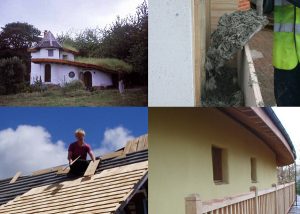

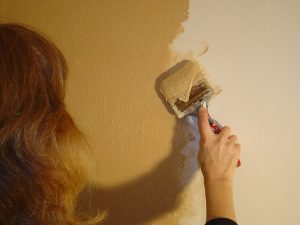
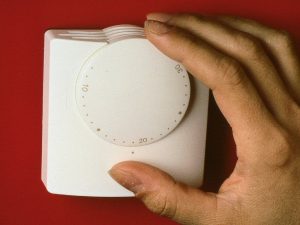
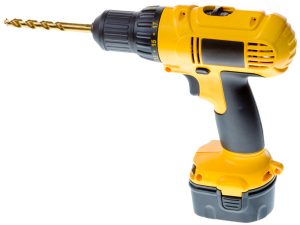
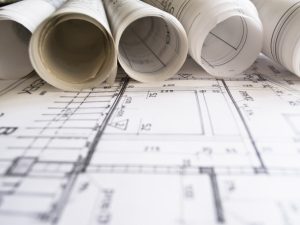


15 Comments
I’ve got a smallish, mid terrace victorian house and would like to insulate the outside walls and the party walls on one side without losing too much space in the rooms. Any suggestions?
Hi Theresa. See http://www.superhomes.org.uk/resources/insulating-a-solid-wall/ and http://www.superhomes.org.uk/resources/whats-best-insulation-material/
Firstly, thanks for being the specialist for this topic. On the subject of small-ish victorian mid-terrace houses: please could you advise whether making solid walls breathable to help with condensation would be worth applying to internal walls (that divide rooms only) as well as external walls?
Making walls breathable allows water vapour to be absorbed. If condensation is a problem in the rooms concerned, then it can be addressed by doing this.
Breathability is important where humidity needs to be tackled. It is not to be confused with airtightness.
Breathable constructions are composed of hygroscopic materials, such as: wood, stone, brick, adobe, earth, straw bale, lime, hemcrete and organic sheet materials.
Materials which prevent air from passing through include: vinyl (incl. vinyl paint), metal, non-permeable plastic sheeting, and polystyrene-type slab insulation.
Much water vapour is given off by human inhabitants in breathing, washing and cooking. This water must not be allowed to accumulate in a building.
I hope this helps.
Condensation is also caused by thermal bridging, leading to cold spots on the inside of a wall where moisture can condense. Mould can grow here. A ‘thermal bridge’ is a continuity of conductive materials (such as a window slab or solid wall) that conducts heat or cold from one side of a wall to another. Insulation on one side or the other (or in between) helps prevent this.
Hi. I own a 1960’s built end terrace in Herts. I want to completely renovate it to improve energy performance, doing away with gas htg, replacing worn double glazing and insulating it, not only to keep it warm, but also to keep it cooler (I’m starting to suffer with the heat these days) I also want to look to my future needs re mobility and install a downstairs shower and improve access by rebuilding the very restricted rear entrance. I feel that I need an architect with experience in green building / energy etc to design and execute what I have in mind as a whole project, not just piecemeal.
Can anyone here point me in a good direction?
Tim, you should be able to find someone here: https://www.aecb.net/#
Thanks David, that looks really useful. It will give me a really good starting point. Thanks for the pointer.
Hi David, I live in a 1960 built chalet style top flat in Glos that I have fitted double glazing, extra loft insulation into and its mostly OK most of the time.
However the heat wave showed me its weaknesses with over night temperatures at 28C, so something needs to be done.
I’m not fond of air-con because of its noise and energy consumption (and the roof here is not suitable for solar PV to lighten the power load).
Please could you advise me if some sort of insulation between the roof rafters help to keep the heat from red hot tiles out? Is there a way to do this myself as funds are short due to coronavirus?
Thank you
Greg
@Greg: The heatwave included clear night skies and there was some wind. Therefore in the daytime prevent heat entering by closing curtains and, even better, covering the windows on the outside if poss (mimicking the shutters common in Mediterranean areas). Also close windows to prevent hot air entering. At night do the opposite, opening doors and windows in an effort to ensure cross ventilation or vertical ventilation can purge hot air from the space. (Difficult if you’re in a top floor one level flat – heat is rising from below in the daytime; windows on the ground floor would need to be open at night for stack effect ventilation but that may be a security issue.) House plants and containers of water also help as the phase change of evaporation cools the space by absorbing heat. This works less well in humid times, when the night time temperature doesn’t lower so well so you’d need to add external insulation as well as the above. David
Hi again David,
Thanks for your suggestions, I think I have to be realistic and go in the direction of internal wall insulation that I can fit myself.
Please do you have suggestions for how best to approach this & materials that are planet friendly?
I’m considering heating change to remove radiators & install skirting heaters, any suggestions please?
Kind regards
Can I refer you to my book Sustainable Home Refurbishment pub by Routledge?
Greg – yeah, I guess there are so many approaches, materials and heating suggestions that it would require an enormous response. More specific questions are better.
Hi Dave
Welcome to Stroud where I live here too!
Since my last contact we have had cavity wall insulation installed which wasn’t possible before, though this summers 3x heat waves have shown that keeping heat out (or a low carbon way of removal of heat) is badly needed here as well!
So I would welcome your thoughts on technology that might make a PCM (Phase Change Material) system into a heat capture system?
Has this been done anywhere?
Thank you
Greg
insulation works both ways – it keeps heat out as well as in. so you should have had a small amount of benefit from the CWI. that said thermal mass is quite critical as is ventilation, so it’d be interesting to see if the heat was delayed at all in getting in. Then you can look at a ventilation strategy that goes with that. If you have the thermal mass and windows that are secure enough to be left open overnight then I recommend purge cooling overnight then shutting all the windows as soon as the outside temperature exceeds that inside and possible look at something to keep the heat out of the south facing windows.
I have seen PCM in action 10 years ago in Germany. The issue with it is that there is only a fixed amount of energy they can store, and you’d still need the pour cooling to get them to change phase back again. You may spend a lot of money but only get 1kWh of cooling